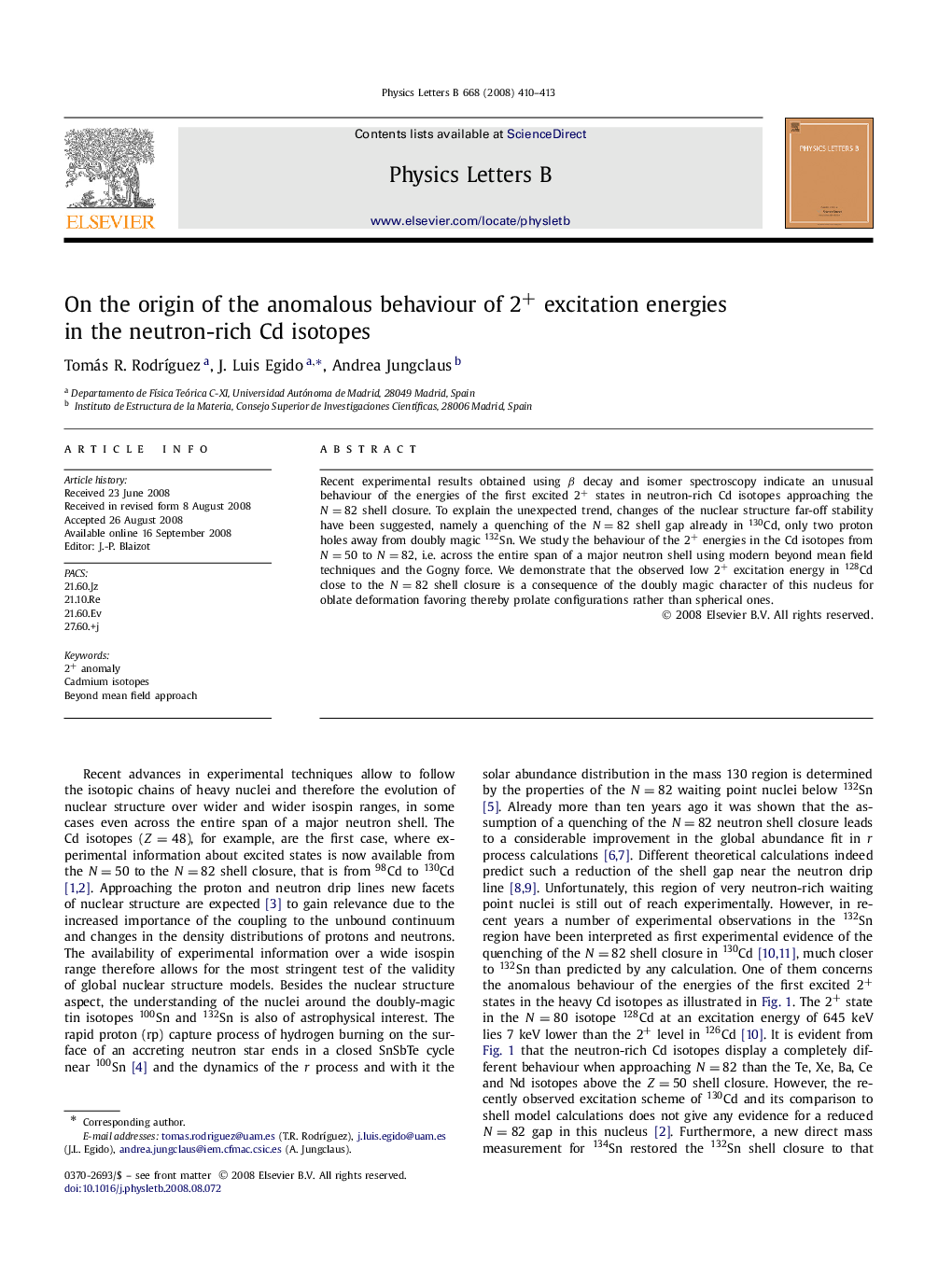| Article ID | Journal | Published Year | Pages | File Type |
|---|---|---|---|---|
| 1853466 | Physics Letters B | 2008 | 4 Pages |
Recent experimental results obtained using β decay and isomer spectroscopy indicate an unusual behaviour of the energies of the first excited 2+2+ states in neutron-rich Cd isotopes approaching the N=82N=82 shell closure. To explain the unexpected trend, changes of the nuclear structure far-off stability have been suggested, namely a quenching of the N=82N=82 shell gap already in 130Cd, only two proton holes away from doubly magic 132Sn. We study the behaviour of the 2+2+ energies in the Cd isotopes from N=50N=50 to N=82N=82, i.e. across the entire span of a major neutron shell using modern beyond mean field techniques and the Gogny force. We demonstrate that the observed low 2+2+ excitation energy in 128Cd close to the N=82N=82 shell closure is a consequence of the doubly magic character of this nucleus for oblate deformation favoring thereby prolate configurations rather than spherical ones.
